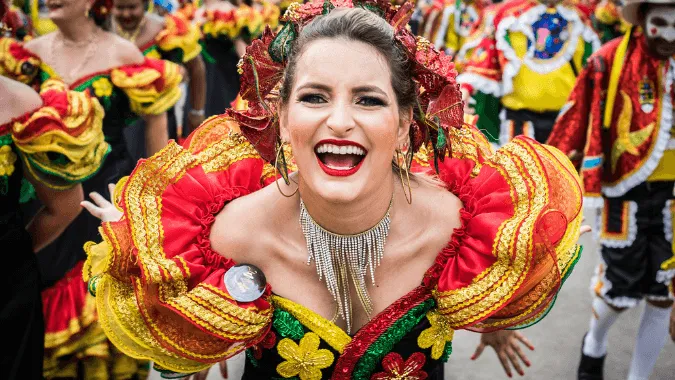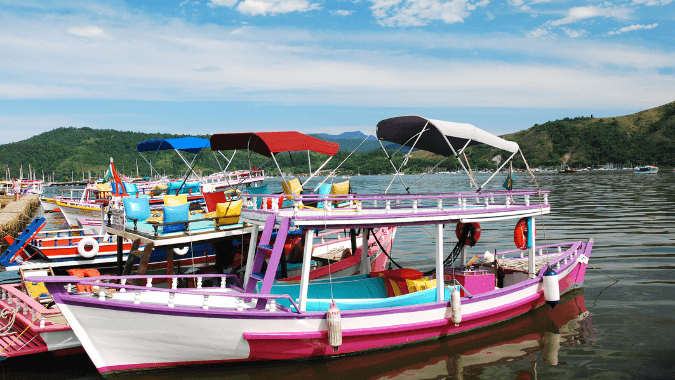The People of Salta: Discover its Indigenous Communities
Out of all the provinces in Argentina, Salta is the one with the highest concentration of indigenous peoples, due to its close proximity to the Andes and Bolivia. Prior to the arrival of the Spanish, this part of the country was a hotbed for different ethnic groups and today, the people of Salta are made up of a number of indigenous communities. Below we have outlined these communities and provided information on each one’s history, language and traditions.
Chiriguano aka Avá - skilled warriors
The name Chiriguano is believed to be of Quechuan derivation, however a more probable explanation is that it refers to the mixed ethnic origin of the Chiriguano. Historically, the Chiriguano referred to themselves as Avá, meaning ‘men’, and were known for being skilled warriors and archery hunters. Before the Spanish conquest, they occupied a vast territory that ranged from the upper Río Pilcomayo to the upper Río Grande in Bolivia, living in large communal houses which they built using logs and straw. Nowadays, they are settled in dozens of communities in the foothills of the Bolivian Andes and in border towns of Paraguay, as well as Salta and Jujuy, where the total Chiriguano population is estimated to be around 21,000. Most members of this community now live with Franciscan monks and work in sugar mills or as local labourers, and they still speak their native language, although the number of bilingual speakers is increasing.
[caption id="attachment_2197" align="aligncenter" width="420"] Most Chiriguanos work in sugar mills or as local labourers / source [/caption]
Most Chiriguanos work in sugar mills or as local labourers / source [/caption] Chané aka Tapii - farmers and craftsmen
While the Chiriguanos were renowned for their hunting and warlike actions, the Chanés stuck to farming and craftsmanship. They left Guayana approximately 2,500 years ago and began building densely populated villages, where they cultivated corn, peanuts, sweet potatoes and beans, raised llamas and practiced pottery, wood carving and textiles. Along with the Incas, they established a truce to join forces against the Chiriguanos, and mixed with Europeans after Argentina gained independence. Although the Chané communities currently living in Argentina have been heavily influenced by the Guaranís, they still maintain their own culture, which is an important heritage component of Salta and Jujuy.
[caption id="attachment_2198" align="aligncenter" width="420"] Chané people exhibiting their textile produce / source[/caption]
Chané people exhibiting their textile produce / source[/caption] Wichí aka Mataco - clans within communities
This ethnic group was named Mataco by English settlers, but although they are widely known by this name, they see it as derogatory and prefer to be called Wichí. The Wichí date back to the Jesuit and Franciscan missionaries of the 17th and 18th centuries, and are still fairly numerous today, with up to 50,000 living in south-eastern Bolivia and northern Argentina combined. Wichí villages have their own territory and each community consists of one of more clans, with members belonging in their mother’s clan until they marry; men then move over to their wife’s village. Their houses are built from mud and branches to keep them cool during the hot summer months, and they grow corn, watermelons, beans and pumpkins in their gardens, which are protected by thorny branches to prevent cattle from invading.
[caption id="attachment_2199" align="aligncenter" width="420"] Wichì houses made from mud and branches / source[/caption]
Wichì houses made from mud and branches / source[/caption] Chorote aka Yofuaha - a nomadic people
There are roughly 2,300 Chorotes spread over eight communities in Salta, who are of Patagonian origin, with Andean and Brazilian influences. Their language consists of two very different dialects: manhui, which has 1,500 speakers, and Chulupis, which is spoken by the remaining 800. Most of what is known about this particular indigenous group comes from testimonies of their own, which they have made about their lifestyle and customs. From these, we are able to gather that they are a nomadic people, who would walk great stretches of land to reach the sea when there were fish, before returning to the mountain to continue collecting fruits. They also practiced agriculture, planting seeds in order to sustain themselves and making two-foot deep holes in the ground, where they would store part of their harvest. When they first arrived in Salta, the Chorotes began living with the Wichís and today, they share many of the same customs and families.
Tapieté aka Guarayo - a branch of the Guaranís
The Tapieté are a branch of the Guaraní people who, in Argentina and Bolivia, also refer to themselves as Guarayos. No reference to the ethnicity was made until the nineteenth century, as apparently they simply did not exist before then, however this has been debated. The Tapieté is a typical Chaco culture, similar to the Wichí, but Guarani-speaking. They began migrating to Salta in 1920 to work on sugar plantations, where they are now divided in two small communities, one in Tartagal and the other in La Curvita; in total, there are 484 Tapiete, 100 of whome speak the language. Prior to the Chaco War, they lived in south-eastern Bolivia, where they survived as hunter-gatherers and practiced horticulture and fishing. After the war, during which they were taken prisoner by the Paraguayan military and taken to Paraguay, some remained, others returned to their lands and the rest emigrated to Argentina.
Nivaclé aka Chulupí - a people of different parts
The Nivaclé people were, like many others, forced to seek refuge in non-war zones during the Chaco War, and many moved to the right side of Río Pilcomayo, which runs through Argentina, Bolivia and Paraguay. They refused to live under the Catholic and Protestant missions system until after the war, maintaining their traditional lifestyle in spite of the opposition. Nowadays, there are a substantial number of Nivaclé families living in villages in Salta with other ethnic groups, such as the Chorote and the Wichí. They are divided into the following subgroups: Tovoc Lhavos (people of the river), Chishamnee Lhavos (people from above), Shichaam Lhavos (people from below), Yita' Lhavos (people of the forest), Jotoi Lhavos (people of the esparto grass) and Tavashai Lhavos (people of the savannah).
[caption id="attachment_6861" align="aligncenter" width="420"] The Nivaclé people live in villages with other ethnic groups / source[/caption] With so many different indigenous communities, the people of Salta really are a mixed bag! Why not pay a visit to meet the locals and see all that this beautiful province has to offer. For more information, or to book tours and activities, visit our website.
The Nivaclé people live in villages with other ethnic groups / source[/caption] With so many different indigenous communities, the people of Salta really are a mixed bag! Why not pay a visit to meet the locals and see all that this beautiful province has to offer. For more information, or to book tours and activities, visit our website. By: Milly Day - English Content Manager For: Argentina4u
-
Exciting 4x4 route: São Luís and FortalezafromUS$1,014
-
Vila Gale Mares Resort All InclusivefromUS$100
-
Ecotourism in Chapada DiamantinafromUS$672
-
All inclusive Vila Gelé Cumbuco ResortfromUS$999
-
Full Day Cafayate Tour from SaltafromUS$68
-
Transfer Aeroparque - Buenos AiresfromUS$46
-
-
Transfer Ezeiza - AeroparquefromUS$91
-
-
Excursion to El Chaltén from El CalafatefromUS$153
-
-
-
-
-
-
-
-
-
-
-



